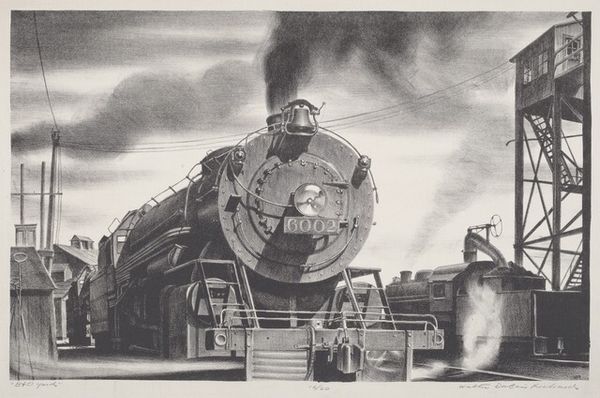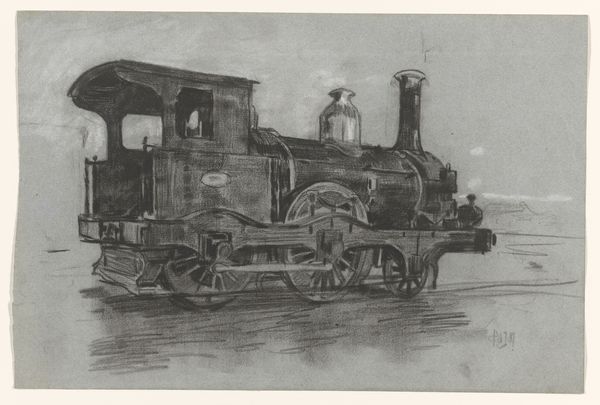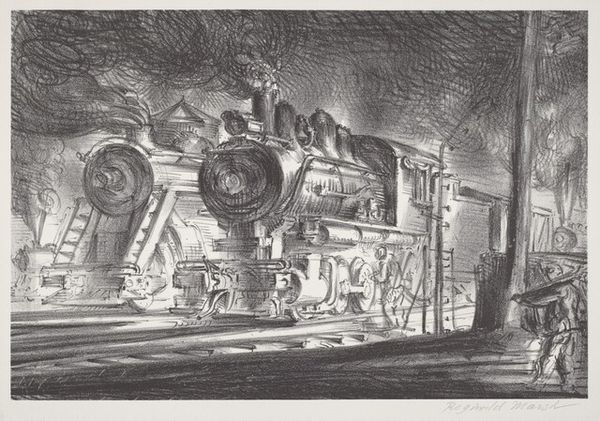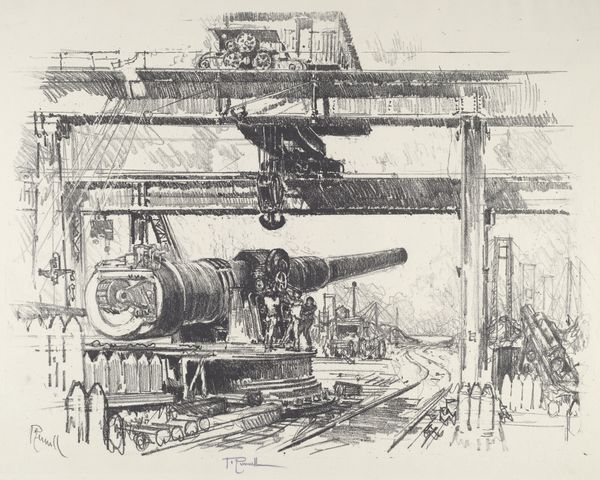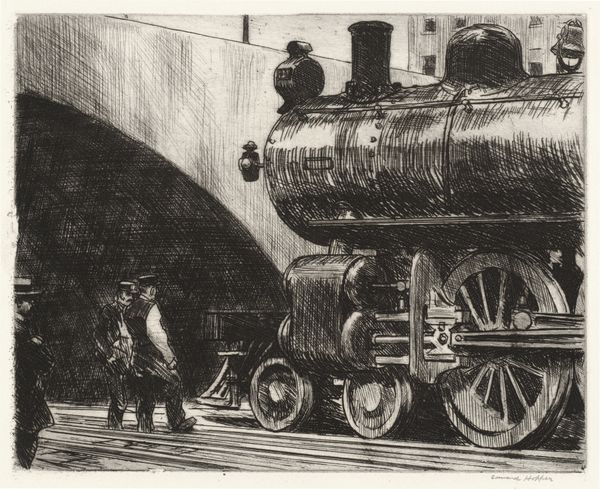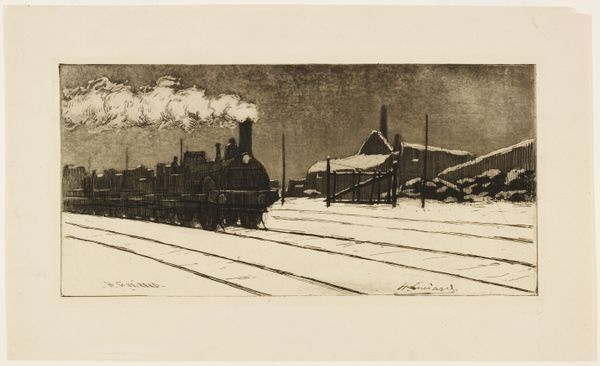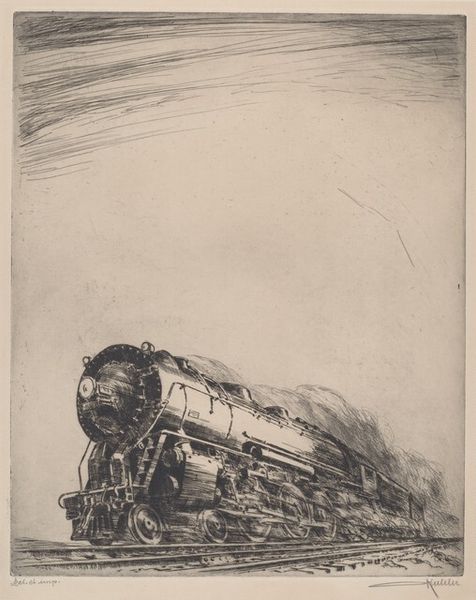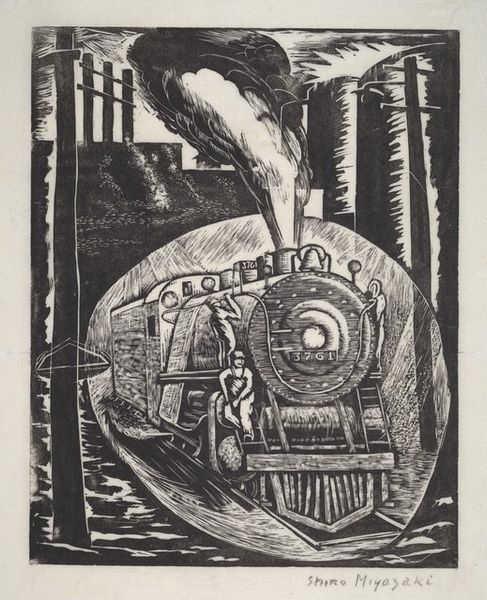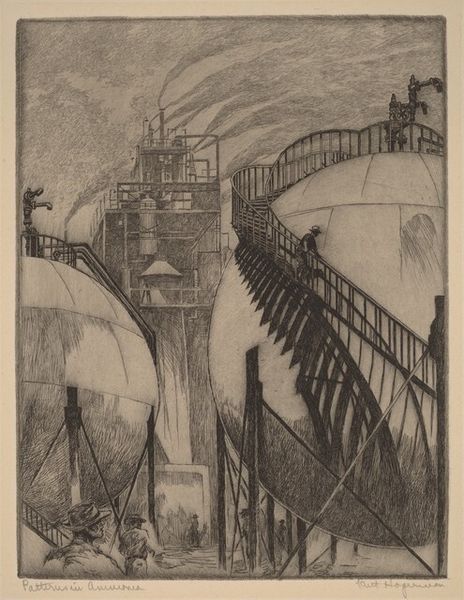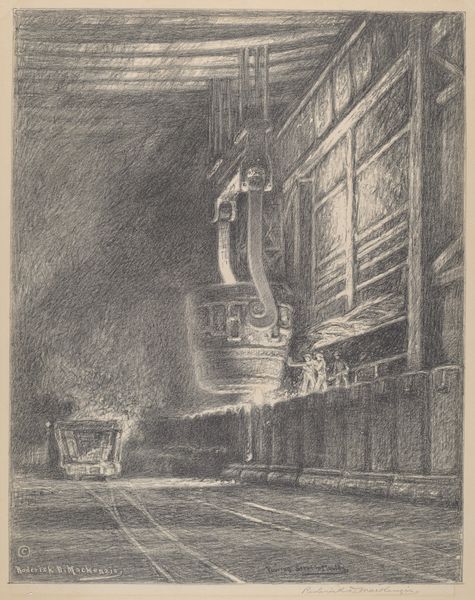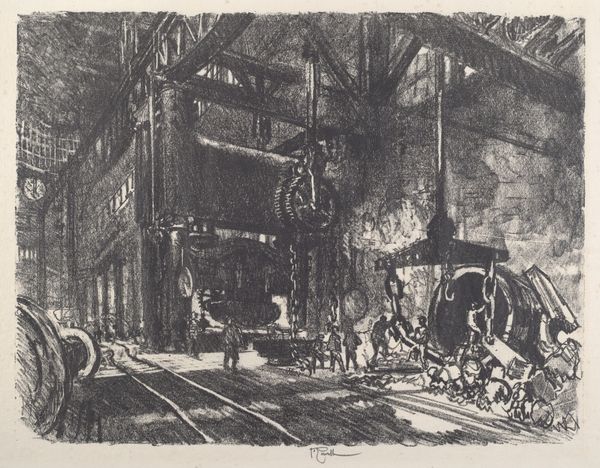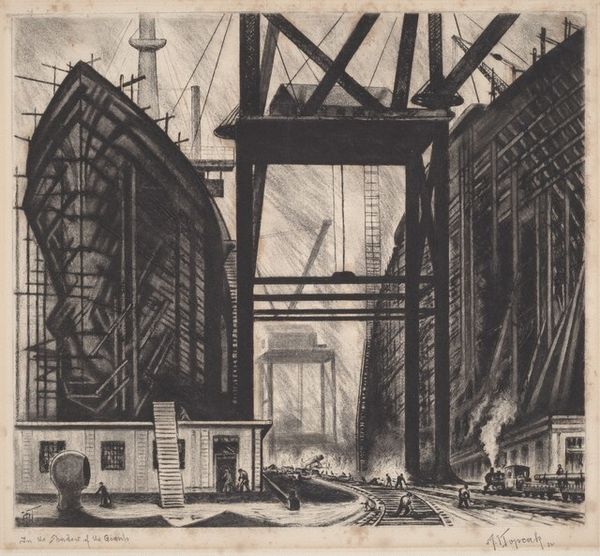
graphic-art, print, etching
#
graphic-art
# print
#
etching
#
cityscape
#
modernism
#
realism
Dimensions: image: 337 x 381 mm paper: 400 x 527 mm
Copyright: National Gallery of Art: CC0 1.0
Curator: This print by Otto August Kuehler, dating to about 1929, is called "Super Power". The primary medium appears to be etching, a type of graphic art, which is fascinating, but it also features aquatint elements, it seems. The detail in this print is astonishing. Editor: It evokes a potent feeling of industrial might—something about the stark contrast of the black locomotive against the gray bridge. The steam rising behind creates this palpable energy, an almost oppressive atmosphere of unstoppable force. Curator: That reading resonates with me. Notice how Kuehler positions the locomotive, dominating the frame? It seems like it’s emerging not just from the bridge, but almost from the image itself. The realism, combined with elements of modernism, celebrates technological advancement as power. Editor: And think about the implications. A steam train was no mere transport; it became a symbol. Here, Kuehler is almost making an argument for industrial dominance, casting progress as inherently heroic, don’t you think? Curator: I can definitely see that angle, yes. And I would add, within the urban setting, trains embodied progress in cultural imagination—connectivity, societal transformation, and also potential uprooting. Its movement across the city landscape becomes visually analogous to cultural change itself. The bridge, however, adds a crucial symbolic layer, does it not? Editor: Absolutely! A visual manifestation of connection. By placing this symbol so prominently behind the train, the composition posits industrial power as the enabler, the physical bridge to the future. Curator: What I find captivating is how Kühler manages to make cold, industrial forms deeply expressive. It’s not just a picture of a train; it's an icon. Look at the geometric patterns and how they mimic urban and architectural forms... The image has depth, both in texture and implied narratives. Editor: Yes, it’s an exercise in persuasion as much as depiction. Beyond the aesthetics, it’s a time capsule of optimism during that period, particularly the 20's... This vision obviously came at a price to the communities these industries impacted and steam-rolled over. Something to think about. Curator: Agreed! A powerful and persuasive piece that encapsulates not just an image, but the ethos of an era. Editor: Absolutely, I leave here thinking about how far we've come and the choices involved in getting here!
Comments
No comments
Be the first to comment and join the conversation on the ultimate creative platform.
